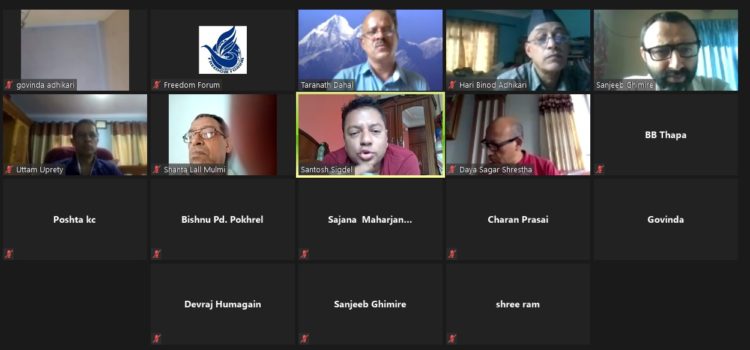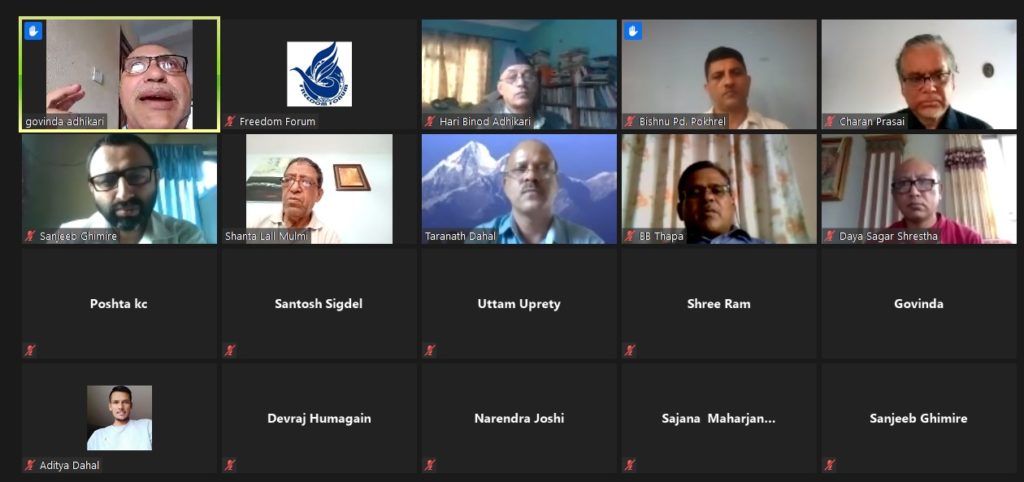A virtual dialogue was organized on ‘Freedom of Association (FoA): Present Status, Challenges, and Way Forward’ on August 10. The dialogue was attended by 21 participants representing CSO, practitioners, academia, researchers, lawyers and writers including freedom of association and expression defenders.
The main objective of the discussion was to develop uniformed conceptual understanding and perception on FoA at practical level when the government was introducing tough measures and actions against the civil society organizations in the country.
The major issues discussed were the fundamentals of FoA and its linkage with expression along with other fundamental freedoms and democracy, establishment and creation of the association, expansion of networking and membership, exploration and mobilization of fund, functional and performance autonomy, internal governance and external intervention, continuity and voluntary dissolution among others.
The participants agreed to continue the series of specific dialogues on FoA fundamentals for creating mutual and uninformed understanding. All the participants expressed deep concern over the government’s recent excessive intervention on the longstanding humanitarian organization- Nepal Red Cross Society dubbing it a severe move and serious breach of the FoA. Mutual solidarity and collaboration among CSOs was stressed while rejecting unnecessary intervention by the government.
Though Nepal has strong constitutional framework for freedom of association, but the independence and autonomy of Nepali CSO is intentionally tampered by government through useless regulatory measures and practices. As CSO leaders with certain political inclination are awarded with government appointments, it is believed that government would wield highhandedness over the CSO freedom.
Critical voices are unheard and peaceful protests are intimidated by government. Another worrying fact is that even a section of CSO community is seeking a guardian role of government to some extent rather than healing internal governance problem through self-regulatory measures.



